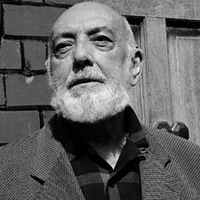Another September by Thomas Kinsella: Summary and Critical Analysis
The title Another September presupposes that the speaker is either in the month of September and is speculating about another one or he has passed the month which might have brought on him some experience and he is bitterly envisioning the next one or he is going to face the coming September.

Thomas Kinsella (born in 1928)
Since the first sentence of the poem is in past tense narrating one experience 'dreams fled away' and it leads to the present form, the speaker connects the part of an event with present reality and describes how he undergoes successive feelings till he finally arrives at the consolatory statements "moving like woman: Justice, truth, such figures". Plenty of images have not only enriched the poem but also have represented the surrealistic expression. One of the most remarkable aspects of the poem is the setting with which the speaker has an intimate relation, it is room, near a garden, by a river, a church –St. John’s and the time is dawn.
The opening expression shows the poet's deep impulse as a reaction to a long standing hope which perhaps declined. He sighs with deep breath 'dreams fled away' which opens up a ground for readers to think whether this was something he was hopeful about and it turned vain. The phrase 'long pitch black breath' intensifies the situation. It appears that the speaker views the surroundings through his traumatized pain stricken eyes. The bedroom’s minor peace has been broken by the moving breeze coming from the garden with bare trees and bushes. Another reference the speaker brings is a church which is calm without people around with all doors locked as if it were sleeping to dream (which can be of faith, mercy, religion, justice) locked inside. The church is the place which is usually visited at birth, at marriage and at death besides Sunday or other festival visits. The image of a sleeping church bears an unpleasant sense which could be equated with mourning for one’s death.
In the second stanza, the poet begins with an animal image of autumn. Autumn could be a symbol of cold and barren life without love and feelings. But it is again an animal that is rubbing its hide “against the bedroom wall/ sensing a fragrant child comes back again.” This evokes the sense that the autumn is war and violence, which is “long used to handling by those countrymen”, is war and violence presented in the image of an animal. This destructive animal is what corrodes the human aspects of existence, and that is the main theme of the poem. And it is the half-tolerated consciousness” of the persona that makes the problem more intense. The cold autumn of the consciousness is “never done” (finished).
In the last stanza, the poet adds to the imagery, this time with vulnerable moths, which contains an imaginative picture of the modern world. The moths ‘blunder’ near a chair, and toss their light shell at the glass. The persona notices the curtains and sees strands of hair, most probably of his dead wife. The whole anxiety seems to be the product of the personal loss, probably the death of his kin and family. The black breathing of the autumn animal billows her name, bearing daggers and balances down the lamp less darkness. At the end of the poem he says that truth and justice are “figures”, meaning figures of speech fit for poetry than practically applicable to life. At one level the poem presents a male-female dichotomy. The sleeping woman, an “unspeaking daughter” is in perfect union with nature; the garden drawing “long pitch black breaths” echoes the “black breathing that billows her sleep”. The man, however, awake in a bedroom “raw/ with the touch of the dawn” from which the dreams have fled, confesses to a “half-tolerated consciousness/ its own cold season never done.” In the light of his cold intellect, it seems as if her sleeping self “waned”, leading instead, to the apparition of menacing abstraction.
The poem opens with an exquisitely controlled six-line sentence that Kinsella will go on to exploit for its rich metamorphic possibilities. Tightly rhymed, nicely balanced between abstractions and specifics, it is both rooted in place and utterly universal. The rhetoric of the poem runs, counter to the trend of the discourse, which provides that the poem is not, as he claims, alienated from nature, but is in harmony with the slow rhythms of the autumn right.
The poem 'Another September' by Thomas Kinsella has religious overtone, as the poet introduces the issues like church, living starlight, starry slates, and personified abstractions like Truth, Justice i.e. it is a blending of the world the poet sees and the world he feels. He has successfully sent the universal pain of loss through his individual, micro world i.e. his room and garden. He has shown how one assimilates oneself with perils/ sorrows that occur. He presents Nature as equally participating in his own grief; it has further pushed the poem into gravity. Sentimentality spills all over the poem.
Cite this Page!
Shrestha, Roma. "Another September by Thomas Kinsella: Summary and Critical Analysis." BachelorandMaster, 19 Sep. 2013, bachelorandmaster.com/britishandamericanpoetry/another-september.html.
